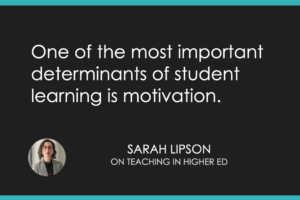



There is no doubt that traditional prerequisite remedial education is an academic dead end. A decade ago, over 1.7 million students were being enrolled in non-credit-bearing courses each year. The offerings were full of unintended and counter-productive deficits thinking about what students ‘couldn’t do’ and how they ‘weren’t ready,’ for college-level work, with fewer than 1 in 10 going on to graduate.
The problem was undeniable. Fortunately, a decade of reforms led to positive changes in how college students pick a program of study, are placed into first-year courses, and supported along the way. Yet in a recent and major survey of higher education leaders, over half report that they still rely on traditional remedial sequences from which students stop out from college, without credit and with plenty of debt. The negative effects are particularly pronounced for Pell-eligible and Black, Latinx, and Indigenous students. One recent study by the State Higher Education Executive Officers found inexcusable institutional performance gaps: “gateway” course failure rates were twice as large among Black students as compared to their White peers.
These and other important findings are summarized in No Room for Doubt: Moving Corequisite Support from Idea to Imperative, an impassioned call-to-action published in April by Complete College America (CCA). The report summarizes evidence that the corequisite model—with students enrolled in credit-bearing, well-designed, and well-supported first-year courses—leads to greater persistence and completion. It also makes a compelling case for colleges, universities, systems, and state agencies to take a holistic approach by:
CCA’s call-out of effective and equity-promoting pedagogy is notable. In the short history of developmental education reform, many efforts are focused outside of class.
For example, three of the four ‘pillars’ of the ‘guided pathways’ model focus on i. defining a clear path of study (design), ii. helping students select the path that’s right for them (onboarding), and iii. helping students stay on the path, often through advising and other out-of-class resources (support). The fourth pillar, to ‘ensure learning,’ has been under-addressed. By emphasizing the importance of, what CCA calls, “just in time” instruction that is “student-centered and culturally-responsive,” the report honors the unique impact that faculty have on student success and equity.
This past year, ACUE experienced as much with developmental English faculty in Arkansas in Ohio. Through generous support from Strong Start to Finish (SSTF), a national network dedicated to the reform of developmental education, ACUE is credentialing faculty in Effective Teaching Practices for in-person, online, and blended corequisite instruction. Well over 90% found recommended practices relevant to their corequisite courses and helpful in refining their instruction. Participating faculty learned about and implemented dozens of evidence-based and equity-promoting practices shown to close institutional achievement gaps among students of different race and socio-economic status. As faculty developed proven instructional practices, they also gained more positive mindsets about their students’ ability to learn and their own ability to impact this change.
The holistic approach recommended by CCA will be complemented in a forthcoming toolkit by ACUE and SSTF, “Success and Equity through Quality Instruction: Engaging Faculty in the Student Success Movement.” Designed as a resource for self-assessment, planning, and action, the toolkit shows how faculty bring all seven of the core principles of developmental education reform to life and how institutions should support their efforts.
Dr. Jonathan Gyurko is President and Co-Founder of ACUE.
A private, nonprofit institution founded in 1875, Park University resembles a lot of traditional liberal arts colleges, with a flagship residential campus just outside Kansas City in Parkville, Mo. But over the past 25 years, Park has emerged as “an innovator in distance learning and online curriculum,” developing over 650 courses online that serve nearly 80% of all enrolled students. With 40 additional satellite campus centers spread out across the country, Park pursues its mission to provide a diverse community of learners, including adult and military students, with greater access to a high-quality education.
“Expanding outside of our flagship campus to serve adult and military students very much grew from a commitment to the founders’ goal of providing access to a high-quality liberal arts experience to anyone who had the hunger for that experience, removing barriers related to cost, time, and location for students,” says Emily Sallee, associate provost at Park University.
In 2017, Park University and ACUE partnered through a KC Scholars Postsecondary Network grant, supported by Ewing Marion Kauffman Foundation, to train and credential 300 faculty members across Kansas and Missouri. Led by Amber Dailey-Hebert, who directs Park’s teaching and learning center, called the Faculty Center for Innovation (FCI), the inaugural cohort thrived.
“Our faculty were really impressed with the ACUE experience,” Sallee says. “We had excellent completion rates and the level of collegiality and community fostered among full-time and adjunct faculty had a positive impact on our culture.”
At the time, ACUE was developing a new certificate program for effective online teaching practices. Laurie Pendleton, ACUE’s executive director of content, said that Park University’s history with online learning and faculty’s deep knowledge of online pedagogy was immediately apparent. ACUE interviewed and filmed several Park faculty and students to showcase and demonstrate effective online teaching practices as part of its course development.
“Park University’s faculty provided practical and thoughtful strategies and their contributions have greatly enhanced the course,” says Pendleton. “Their knowledge of effective teaching and the care and concern they have for their students’ success was very evident.”
Watch: Jennifer Whitley, a lecturer of mathematics at Park University, discusses how to develop students’ study skills in online courses.
Investing in faculty
When ACUE officially launched Effective Online Teaching Practices in early 2020, Sallee said she believed Park University’s faculty could once again benefit.
“Park University believes in investing in our adjunct and full-time faculty,” said Sallee. “We remembered what a fantastic experience ACUE was the first time around and knew that enrolling a new cohort through the Effective Online Teaching Practices course would be valuable as well.”
Still, questions remained. Some enrolled faculty had over 20 years of teaching fully online and hybrid courses. Sallee couldn’t help but ask: “Would this be able to meet our faculty learners at different levels of their development as online teachers?”
‘ACUE raised the bar’
One measure of impact was that nearly 90% of faculty completed the course and 96% of faculty found the content relevant to their work. “ACUE’s value was reinforced in spades,” Sallee said. “We had faculty who were dealing with really significant issues caused by the pandemic, both professionally and personally, but they still persisted in completing the course – because they saw the value in it for themselves and, by extension, their students.”
“We’re focused on providing continuous learning opportunities for all our instructors and ACUE has been such an essential part of that,” says Dailey-Hebert, who facilitated ACUE’s inaugural cohort and has earned credentials both ACUE’s Effective Teaching Practices and Effective Online Teaching Practices programs.
Emily Grover, who also completed the online course, said that ACUE changed the way she thought about connecting with students in online courses.
“ACUE raised the bar for how I approach building relationships with students in my asynchronous classes,” Grover said. “I used to assume that I couldn’t get to know students that well online, and so maybe it wasn’t that important to know their names. ACUE provided so many specific examples and strategies for how to create the kind of environment where you can have relationships with students.”
For example, Grover now utilizes short videos into her online courses. “I used to think that the only point of video was to supplement my lectures, but ACUE pointed out that videos are how students actually know who you are and a way to put more of my personality into the class.”
‘A Lightbulb Moment’
At an institutional level, Sallee believes that the ACUE experience will be even more transformative. Working with ACUE’s impact and evaluation team, Park’s facilitators noticed that faculty were implementing fewer of the course’s recommended techniques than expected. That led to meaningful conversations about the university’s online course design.
Faculty in the ACUE cohort reported that implementing many techniques required permission to make changes to the pre-populated content on the university’s learning management system.
According to Sallee, faculty were bumping into a decades-long tension within the field of online teaching and learning that tends to prioritize content consistency and scalability. Establishing shared learning outcomes, high-quality content, course design, and assessment standards across all online offerings is critical to ensuring consistent quality learning experiences for students. It’s also helpful for instructors teaching accelerated online courses, who often have limited time to develop new content. The downside is that a pre-populated ‘course shell’ can leave limited room for individual instructors to make changes during a given term.
“That was a light bulb moment,” Sallee says. “This ACUE experience is helping us reflect on our policies around what instructors can and cannot change dynamically in the standardized online content. We want to make sure that our institutional practices aren’t unintentionally working against nimble, responsive teaching.”
Adjunct Perspectives: Demonstrating Innovative Strategies in Online Courses
Through the FCI’s Teaching Innovation Fellows Program, faculty are selected each year to lead special interest groups that research, discuss, and share new ideas about their instructional practice. As one of three fellows selected for the 2021-2022 academic year, Grover is preparing to lead an adjunct faculty learning community at Park University to study how to leverage instructional agency and implement ACUE techniques within Park’s course development model.
“I realized after taking ACUE that there are a lot of ways to innovate within any course structure,” said Grover. “The goal is to get a community of online adjuncts to discuss what we can do to personalize, innovate, and have a space where we can share those resources.”
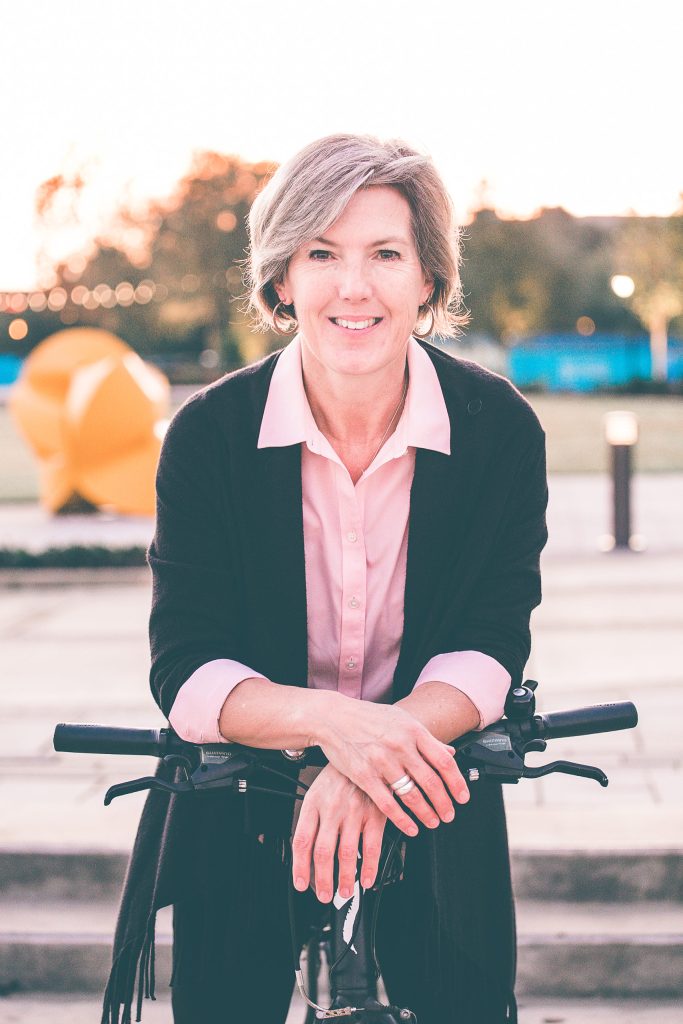
How does physical movement affect learning?
“Movement determines, in a lot of ways, how our brains work,” says Susan Hrach, author of Minding Bodies: How Physical Space, Sensation, and Movement Affect Learning. In her book, Hrach shares findings from evolutionary science and research in cognitive psychology, kinesiology, and phenomenology, and calls for learning experiences to honor the brain-body connection.
In this interview, Hrach shares how movement, physical space, and sensory learning affects learning.
Dr. Susan Hrach (rahk) is director of the Faculty Center for the Enhancement of Teaching and Learning and professor of English at Columbus State University in Georgia.
Evolutionary science researchers theorize that our brains have developed, primarily, to harness the different ways our bodies can move. Movement optimizes, in a lot of ways, how our brains were designed to think.
So how can we get students moving around in the classroom? Here’s a recommendation I like to think of as Think-Pair-Share 2.0.
 How human brains process information is really affected by the physical space we occupy. Ceiling height, colors, and natural light are all factors. One small way to optimize your physical learning space is something as simple as making sure the window blinds are always open to let in more natural light.
How human brains process information is really affected by the physical space we occupy. Ceiling height, colors, and natural light are all factors. One small way to optimize your physical learning space is something as simple as making sure the window blinds are always open to let in more natural light.
Another factor is being exposed to different areas and perceptions of the same physical space. In a classroom, for example, what if we, as instructors, challenged ourselves to get students to move around to different parts of the room two or three times per class? It will look different for every discipline, but you might have different walls representing different workstations that students can move around to. Or you could use mobile whiteboards or incorporate giant sticky notes into class so that your students are moving around and processing different pieces of the content in different parts of the room.
Neuroscience tells us that the brain is always trying to conserve energy, and one way it does that is by making predictions based on past experiences. So when we encounter a new idea or concept or object, it requires a lot of bodily energy, conscious attention, and exposure from multiple perspectives to ensure our brains accurately perceive that information.
The more opportunities we have to practice a skill or interact with a concept, the more our brains will actually begin to enjoy the experience. When you’re able to place new information inside a familiar context, your brain literally releases a chemical reward. It’s a pleasure response. Faculty should think about this in the context of their classes. Hands-on activities with an object, or observing a concept in different ways, such as through audio recordings, are ways to channel bodily energy and add perspectives. The sciences and studio arts are fortunate in many ways because they have an experiential model built into their classes. It will be more challenging for other disciplines, but worth the effort.
Any conversation about movement must recognize inclusiveness as an important part of any physical learning activities. We all operate with different levels of mobility. I may be living with a permanent disability or a temporary injury that limits movement, while someone else might be in her third trimester of pregnancy. There are all sorts of reasons why your mobility is different on different days and in different times of your life. Above all, I think it’s important to approach movement in the classroom with a sense of respect and kindness for everybody’s place on a given day.
References
Barrett, Lisa Feldman. 2017. How Emotions Are Made: The Secret Life of the Brain. New York: Houghton Mifflin Harcourt.
Paul, Annie Murphy. 2021. The Extended Mind: The Power of Thinking Outside the Brain. New York: Houghton Mifflin Harcourt.
Williams, Florence. 2017. The Nature Fix: Why Nature Makes Us Happier, Healthier, and More Creative. New York: W.W. Norton.
Wolpert, Daniel M. 2011. “The Real Reason for Brains.” TEDGlobal. https://www.ted.com/talks/daniel_wolpert_the_real_reason_for_brains.
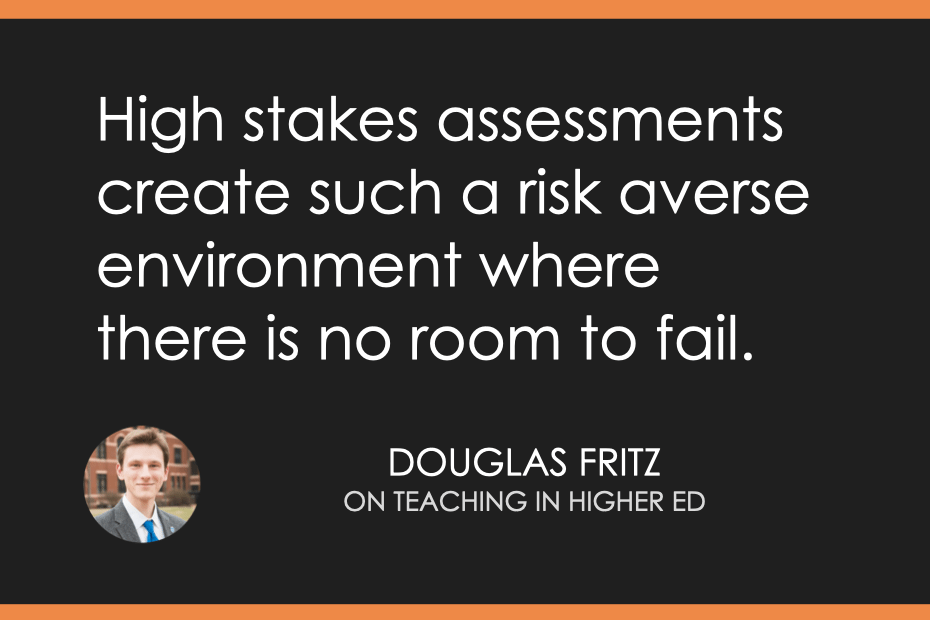
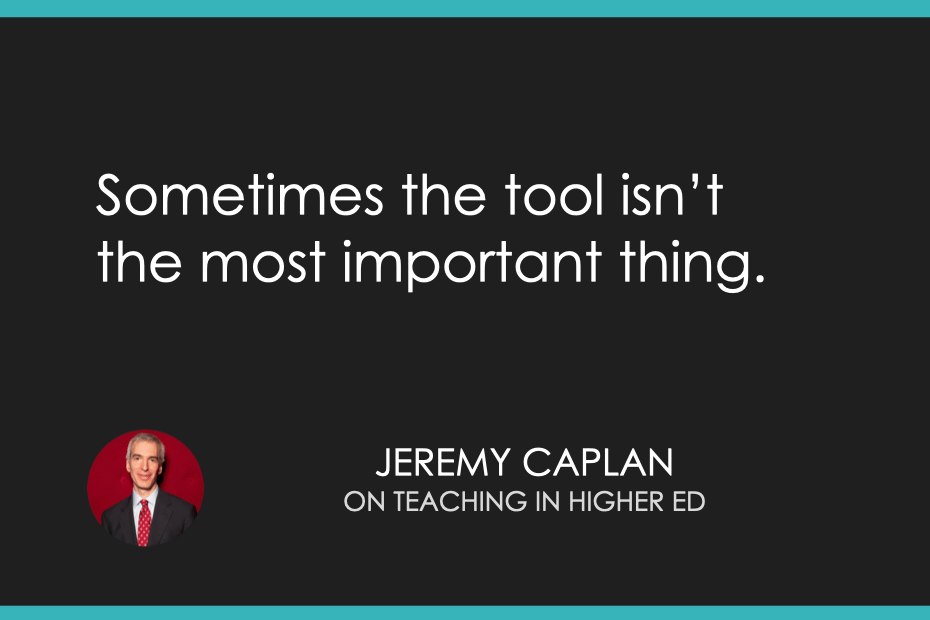
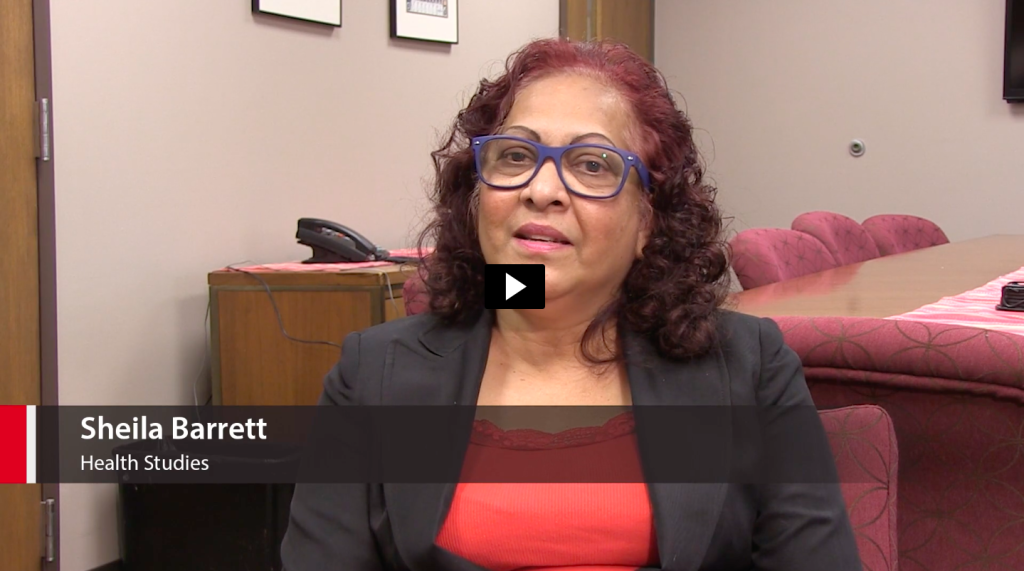
Last summer, Northern Illinois University (NIU) and the Association of College and University Educators (ACUE) launched an institutional partnership to empower students through instructional excellence. In the first year, an inaugural cohort of 30 faculty members from across disciplines and departments enrolled in the Effective Teaching Practices program, which was facilitated by NIU’s Center for Innovative Teaching and Learning (CITL). To reflect on a successful and challenging first year, CITL Executive Director Jason Rhode and NIU faculty have shared what they learned from the ACUE experience.
“The ACUE partnership sends a clear signal that quality instruction, student success, and diversity, equity, and inclusion are institutional priorities,” Rhode shared in an NIU Board of Trustees presentation.
“Good teaching is inclusive teaching,” said Rhode. “Evidence-based teaching practices, when done with an intentionality to create an inclusive learning environment and ensure equitable learning opportunities are inclusive teaching practices.”
Rhode shared that the CITL team is working to tailor the ACUE program and integrate it with the work of the Office of Academic Diversity, Equity and Inclusion. Faculty shared how recommended strategies in the ACUE course helped them become more inclusive teachers. Rachel Warren, director of teacher preparation and development, said she benefitted in particular from the Project Implicit activity. “It was an opportunity for me to confront my biases, because we all have them,” Warren said.
Sheila Barrett, an associate professor of health studies, said that ACUE’s course pushed her to reckon with and address the unique differences in her class. “I just felt that race is not a problem for me. I see students, I don’t see races. But I realized the students in front of me, they don’t see life the way I see it. They’re coming from different backgrounds. That was something very useful that came out of that module.”
As an engineer, Dr. Shanthi Muthuswamy, an associate professor in NIU’s Department of Engineering Technology, is trained to interpret the world through data and draw conclusions through scientific methods and statistical analysis. What surprised her the most from her ACUE course experience was how she’s built stronger relationships with more of her students than ever before.
“My students started seeing me and I see them,” Muthuswamy said at the NIU Board of Trustees earlier this year:
I asked students to share what their favorite local takeout restaurants were, asked them to share one thing they were worried about in an online class and so on. Jason’s quote comes from that exercise.
“My biggest fear about an online class is missing a deadline or due date. I work full-time as a CAD Drafter/Designer (11 years), and I’m currently taking care of my father in most of my remaining free time.” – Jason
Students started opening up. I learned so much about them – including which Mexican restaurant has 25 different kinds of salsa. My respect for them grew when I came to know that they are taking care of their elderly parents during these stressful times. That’s what I mean, I started seeing them.
Faculty said that the design of the course itself was transformative for their own learning. Rhode said that NIU faculty engagement rates on the ACUE course were 98%, higher than the national average. “Faculty are loving the course and finding it helpful and relevant to their work,” Rhode said.
“The course helped me see how to adjust the things that I knew weren’t working and how to improve the things that had been working,” said Ted Hogan, a professor in NIU’s Department of Engineering Technology. “I was challenged by the course to introduce things I’ve never tried before.”
Warren agreed. “ACUE really pushed me out of my comfort zone as an instructor and created opportunities for my students to demonstrate learning in a different way that I hadn’t thought of.”
Learn about ACUE’s newest microcredential, Inclusive Teaching for Equitable Learning
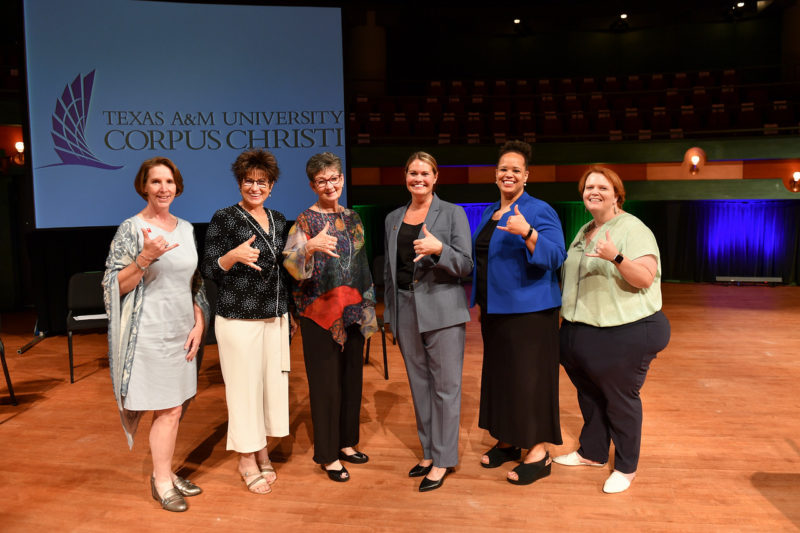
Texas A&M University-Corpus Christi’s Doctor of Nursing Practice Program facilitates student success using ACUE.
Last August, Texas A&M University-Corpus Christi (TAMU-CC) embarked on a journey to drive student success through quality instruction in partnership with the Association of College and University Educators (ACUE). In the first year, the plan was to prepare and credential 60 faculty members who represented a diverse range of disciplines through ACUE’s Effective Teaching Practices, spanning TAMU-CC’s undergraduate, graduate, and doctoral programs. In doing so, TAMU-CC ensured that instructional quality was a priority across all types of its degree programs, including one graduate degree program where ACUE had a particularly profound impact: the Doctor of Nursing Practice (DNP) program.
“ACUE gave us a common language and common pedagogy, which serves us really well because we come from different backgrounds,” says Dr. Tammy McGarity, DNP program coordinator and assistant professor of nursing. “It has increased our interaction and aligned our thinking. From developing assignments to course delivery to grading, we’re on the same page and can better support one another.”
The program at TAMU-CC is part of a Texas A&M University System (TAMUS) initiative to support student success through effective instruction. TAMUS is one of four leading higher education systems participating in Scaling Instructional Excellence for Student Success through the National Association of System Heads (NASH). On May 18, TAMU-CC celebrated Islander faculty at a pinning ceremony to recognize more than 50 faculty who earned a Certificate in Effective College Instruction that is co-endorsed by ACUE and the American Council on Education (ACE).
Within TAMU-CC’s DNP program, faculty weren’t sure what to expect as the ACUE program got underway.
“When we first started with ACUE, I was hesitant and thought, ‘I don’t really know that we need to do this.’ But when we began implementing the practices, we realized how much we needed it,” McGarity says.
Looking back, they realize that implementing the practices has become instinctual—allowing them to tailor practices to suit the DNP curriculum and the specific needs of their doctoral students.
“These recommended practices are dynamic. They apply to so many different contexts and courses,” explains Dr. Christina Murphey, an ACUE-credentialed professor of nursing in TAMU-CC’s DNP program. Murphey says that the significant research and evidence supporting ACUE’s approach was important for embracing the program. “We have data showing that these teaching practices work, which is important for us as educators in a doctoral program.”
In the spring, Murphey and McGarity began co-teaching a course, collaborating to foster critical thinking and clinical reasoning in their DNP students. Utilizing skills from ACUE, they found that implementing Socratic questioning, in particular, allows them to do this successfully in an online setting.
“Posing a question, rather than just offering answers, generates even richer discussion. And it help students reflect on how their own responses can enrich their answers,” Murphey explains. “After we implemented this, we noticed that students began posing questions to their peers in discussion boards as well. We hadn’t anticipated this, but this is something we were really excited to see.”
ACUE practices have also helped Murphey and McGarity increase the transparency and organization of their course. Specifically, they revised assignment instructions to include more details and rubrics. They’ve also added more structure and consistency to their modules. Students have responded positively and there is more time to focus on learning.
It’s also helped instill these graduate students with a level of self-reflection and accountability that is critical for professional success. Murphey and McGarity believe this will help them become more skilled clinicians and stronger executive leaders when they graduate.
“These doctoral students aren’t traditional students. They’re busy practitioners and some of them are leading a whole department within a healthcare system,” Murphey says. “These kinds of students need the specificity and organizational skills the ACUE practices provide. In fact, they may actually benefit from these practices even more than undergraduate students.”
Based on their experiences with ACUE, Murphey and McGarity have made recommendations to the graduate curriculum task force, and they have begun to see a culture of implementation program-wide.
“Our faculty knows that we’ve been using these practices this semester and have seen a lot of success with them, so they are supportive,” McGarity explains.
In this sense, ACUE has done more than add tools to the toolbox; it has also initiated a paradigm shift in TAMU-CC’s DNP program.
“Seeing the success of these practices in our upper level courses has made us realize the importance of introducing these practices in our more generalized courses. Students will benefit from seeing these practices all the way through the program—from the very beginning all the way to graduation,” McGarity says. “Looking ahead, we’re also planning to reassess our six-year-old program’s objectives. We want to think strategically and programmatically about how to align for student success.”